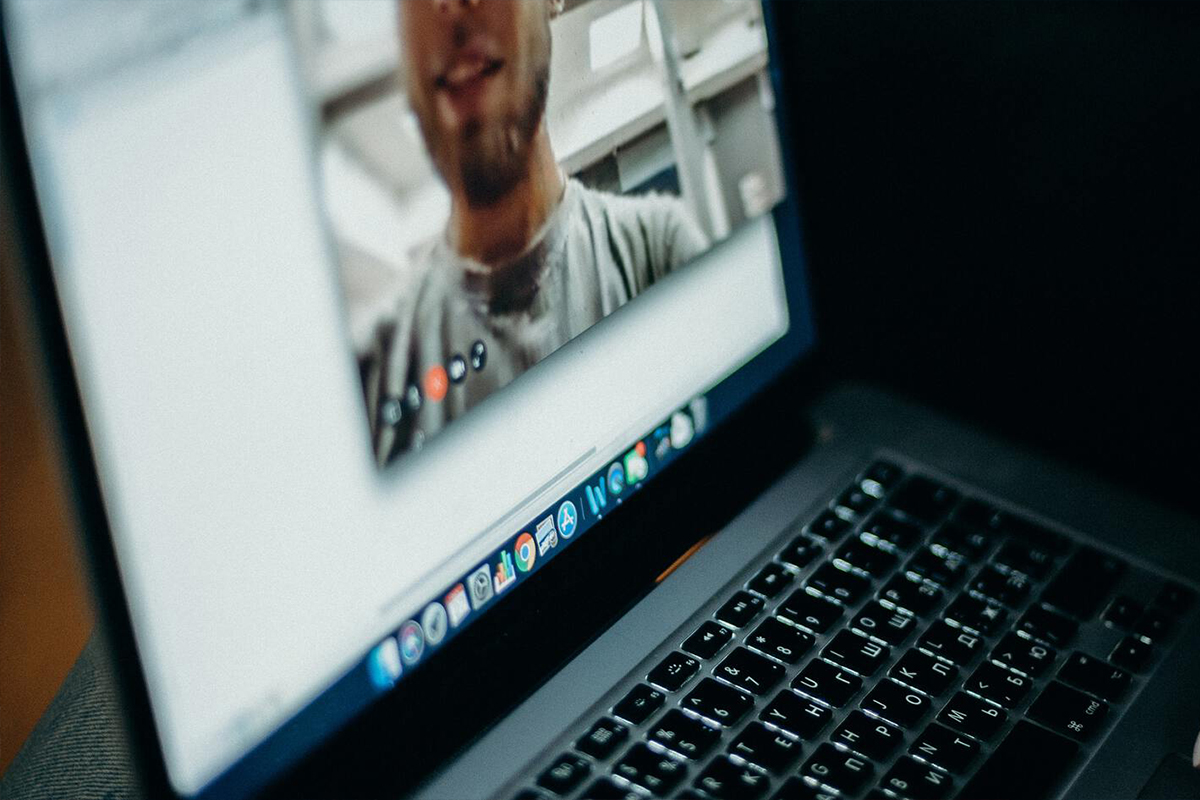Strategy / Perspectives: Ash Dey and Gabi Macra, OpenMind Wellbeing

Leanne Kelly
April 1, 2020
Let’s start with a bit about you and your background.
Ash:
 My background was in Tech Consulting and prior to that I was in IT operations. Both roles were demanding and high pressure, but for different reasons. In 2016, I reached a stage where I prioritised work over my own mental well-being. It led to a downwards spiral. I experienced a raft of anxiety attacks, mental fog and the result was that I wasn’t actually able to work.
My background was in Tech Consulting and prior to that I was in IT operations. Both roles were demanding and high pressure, but for different reasons. In 2016, I reached a stage where I prioritised work over my own mental well-being. It led to a downwards spiral. I experienced a raft of anxiety attacks, mental fog and the result was that I wasn’t actually able to work.
I was lucky that I worked for a very supportive company, so when I spoke with a close colleague and HR about wellbeing and how we could support employees, we had the backing to create an interest group. We ran the group over the course of two-and-a-half years (it is still running today), and it grew to just over 550 employees taking part in yoga sessions across the UK, in offices and remotely. It became a community of people who supported each other. I learnt a lot of lessons around the challenges that workplaces have and more specifically relating to workplace wellbeing.
Gabi:

After living in Japan for 3 years and teaching English after university, I made my way over to the UK and started working in the Actuarial field. First in consulting and then in house in the London Market as Head of Reserving at one of the large insurers. Similar to Ash, I experienced burn-out at points in my corporate career, but I kept going through them, as many of us do. In 2014 I was diagnosed with Multiple Sclerosis, an autoimmune condition, which really was a catalyst for changing how I balanced work with my health. As it turned out, working on my wellbeing and prioritising the wellbeing of my own team resulted in both me and those around me being not only happier, healthier and more connected but also more engaged and effective in our work. That’s when I learned first-hand how important wellbeing was from every angle including profit and performance.
Ash and I worked in the same building for probably three or four years but didn’t meet until 2019. At the time, I worked for a company called QBE which is a large global insurance company. Ash and I also have a mutual friend who owns a yoga studio. It was in 2019 that my friend and I were chatting in the studio and Ash got involved. We got talking about OpenMind, and ourselves, we met up for a couple of coffees and the rest is history.
Ash:
We started building OpenMind in September 2018. Gabi joined just as we were going live with the platform.
How has OpenMind changed?
Ash:
Initially, the platform was very niche with a focus around yoga, meditation and mindfulness. The idea behind OpenMind is to connect workplaces to vetted well-being providers across the UK, managing as much of your admin as possible. We offer reporting based on engagement, so that businesses can see the impact of wellbeing interventions in the workplace.
Then back in September 2019 we started talking about the model, CAR – Connect, Administer and Report. It was then we realised that we were trying to help businesses Evolve their wellbeing programs and that was the birth of CARE, our existing OpenMind platform. This was also where we started properly building out our Wellbeing Catalogue and forming strategic partnerships with wellness providers across the UK.
As a start-up, how did you get the model right and evolve the platform?
Gabi:
Over the course of 2019 we ran a number of case studies. We decided to approach companies, offering a partnership in exchange for their feedback into our service and what they needed in terms of wellbeing. We asked companies to work with us for 10 weeks and we looked for companies who had engagement and buy in from a senior exec in the wellbeing space.
This approach really helped us shape the direction of OpenMind, it’s led us to where we are now.
What advice would you give to start-up businesses?
Gabi:
Constantly look for your next learning opportunity. Be open to asking questions and finding out what people want. One of the biggest mistakes you can make is to assume you have a great idea or a solution and then off you go to build it. When you go out and try and sell, you’ll quickly realise that you’ve forgotten the step of actually listening and finding out what people want and need. That step is so important, listen to people and what they have to say and take on board their feedback. We encourage the businesses we work with to do the same.
What are some of the biggest challenges associated with workplace wellbeing?
Ash:
I think two of the main barriers we see for businesses looking to introduce wellbeing programs are the sheer amount of admin involved and being able to justify the spend to management.
Gabi:
The administration part is huge. Particularly if you don't have a big team yet or if it’s not a dedicated part of someone’s job and they have a ‘day job’ to do too. It can be a day every week looking for providers online, setting up calendar invites, scheduling, cancelling and doing invoices, it can get ridiculous.
The spend piece is interesting, as at the end of the day businesses are there to make money. They have a bottom line, a profit and loss statement every year and shareholders who care about where the money is going. They want to understand what they are spending their money on and what kind of value they are getting back from it. I think that’s where the reporting side of things is so valuable. That's the piece I think that's often missing in the wellness space, that’s where we add value as we can bring professionals together, but we can also provide real insight into what they’re getting back.
What components feed into wellbeing at work?
Ash:
We talk about mental, physical, emotional, social and financial wellbeing as various components of the broader topic of wellbeing. Our focus at OpenMind is around community and creating micro communities around interest groups. We really believe in the positive impact of community on wellbeing.
Gabi:
Social connection is at the core of, and fundamental to, our wellbeing as humans. While all of the pillars of wellbeing (mental, physical, emotional, social and financial) are crucial, the social aspect is often missed as a focus point and so one of OpenMind’s main focuses is ensuring these other pillars are fostered in an environment built on community and connection.
Are you seeing more businesses getting on board with workplace wellbeing?
Ash:
It's still very much a sliding scale. In some places, workplace wellbeing is firmly on the agenda. But then there are those where it’s on the agenda but it’s more lip service. Businesses who get wellbeing right are those who empower employees to own their own well-being. In the current climate wellbeing has very quickly turned to be on everyone’s agenda.
Gabi:
I think where you see wellbeing prioritised is in companies where the culture is good. They tend to have exec teams who really value how their people feel and how they function. Their sole focus isn’t just how much money the business is making. Often, they are leaders who have created a safe space, have been really authentic or have shown their own vulnerability. What they've seen is that by them sharing and admitting that their own well-being is important or that they have struggled with wellbeing in the past means that their people will really engage with them and what they're trying to do. It changes the culture.
Where do businesses go wrong with wellbeing?
Gabi:
One of the things we find businesses doing is trying to find a fix for everybody. Businesses that get it right are those who acknowledge that their people have different areas of interest and things which they prioritise to make them feel well. We aren’t all the same. Allowing those micro communities to evolve and being ok with that is a huge step. Businesses need to understand that you can’t have a single solution which fixes everything for everyone. That’s the difference between people who want to have control over everything vs people who are happy for other people to take play a part and to use their own initiative.
Why should businesses focus on employee wellbeing? Let’s talk about the business case.
Gabi:
We spend on average about 40% of our waking hours at work. In some industries and roles, it's as much as 60 - 80%. For the workplace not to play a part in your well-being, is just really irresponsible. The way that we connect with people is just so incredibly important and so much of that connection is happening at work.
Ash:
There are so many stats out there which show the business case. There’s a recent paper from January which looked at the return on investment of well-being programs on actual businesses.
Gabi:
There’s a well-known piece of research from Harvard that clearly shows the business case. They found that implementing wellbeing initiatives had a resounding impact in the companies they studied. It’s also worth mentioning that the cost of an employee leaving and having to replace them is something like £15,000. If you look at how much money you might put into a person's well-being and making your business a better place to work, it would cost a lot less.
Looking at staff turnover is quite easy, but something else to consider is the loss of money caused by people who are going to work but are unproductive (presenteeism), because they can’t function at their best or have simply lost the motivation to be there. Businesses want to see people at their desks, working their hours but it’s far more beneficial for employees to be in the office for an hour or two less but with a greater sense of wellbeing.
Presenteeism, your employees not working at top performance because they are stressed or unwell, is hard to measure. Deloitte’s 2020 UK Mental Health and Employers Report estimates presenteeism costs somewhere between £900 and £1,000 per year per employee. It relies on businesses being able to create a safe space for their people so that they feel comfortable saying ‘I'm having a mental health day’.
Ash:
We tend to speak to companies about the Value of Investment rather than the Return on Investment. Ask, what's the actual impact on employees? Because in turn that will have an impact on ROI.
When we report we don't just look at how much money is spent. We offer more qualitative information. We want businesses to see that their programs are genuinely impacting how people are coping with stress, how they are feeling about their ability to build relationships and how they are able to focus on their work. There are so many studies which clearly demonstrate the link between wellness, productivity and employee engagement. They clearly show that people’s wellbeing is good for a businesses’ bottom line.
Where do you start with workplace wellbeing?
Ash:
Start by simply asking your employees what they want and need. The easiest way to do this is by setting up a coffee morning or sending out a survey. Of course, it helps to have someone dedicated to wellbeing or for it to be a part of someone’s job. But it’s crucial to get insight from your employees. It’s also really important to realise that the wants and needs of your people might be different in different offices or across different regions.
The most important thing is to make a start and once you have started, get feedback. Use the feedback to start evolving your offering.
I think wellness days are great for getting people involved and thinking about wellbeing, but they’re risky. If it’s just something you’re offering for a day, then you’re creating an opportunity for individuals to experience something that might suit them and then taking it away the day after.
Gabi:
I think it’s also really important that you acknowledge where you are with employees. If you're just exploring wellbeing options because you don’t know where to start, be transparent, tell your people that. I think a big part of the reason that sometimes people don't want to do a coffee morning or send out a survey, especially in bigger companies, is that they feel that if they ask questions, they’ll have to put something in place and respond immediately. Often, they’re not in a position to do so. It’s a bit chicken and egg but I think honesty goes a really long way and you’ll be more likely to get buy-in from employees.
How do you manage to push back from key stakeholders or people who aren't on board with making wellbeing a priority?
Ash:
There are two approaches. One is to tackle it top down and to try and get buy in from the senior team but often the best way to drive wellbeing is to find an internal champion. With a number of businesses we work with, we work closely with an internal advocate and they’re often not people on the leadership team but by them being able to demonstrate the impact and to champion what they’re doing, it really helps.
Sometimes we’re fortunate to be able to have leadership conversations and they’re fully on board, and sometimes, we need to present a bit more qualitative and quantitative data before they’ll make decisions and in those situations, we’ll take a more bottom up approach.
Are there differences in how different businesses and industries view workplace wellbeing?
Gabi:
I think so. There are some companies who have amazing wellbeing programs. They’ve not only looked at the physical, mental and financial wellbeing of their staff, but they've also got cool things going on in their office. They’ve made it a nice base for their people; there’s lots of greenery, the spaces are well designed and pleasant, there are comfortable spaces to destress and more. Not all businesses will value that, but it makes such a huge difference to how people feel at work.
Most businesses will sit somewhere in the middle. They'll want to see that things are working before they’ll fully embrace a wellbeing program. We tend to see that industries like the media, creative and tech. They’re often the trailblazers in wellbeing because they like change and are constantly looking for things to move forwards.
Will COVID-19 impact the growth of wellbeing in the workplace?
Ash:
I think it will accelerate certain elements of workplace well-being, particularly for providers offering virtual services. We have a great opportunity for workplaces to start thinking more about their people but also, for employees and individuals to take ownership and accountability for their own well-being. It’s time to start asking questions of our employers.
What's next for the future of workplace wellbeing?
Ash:
There will be a challenge presented by having 5 generations in the workplace. Different generations will be more or less tech savvy and will have different needs and expectations around wellbeing. I believe that flexibility working is going to be here to stay in many sectors and wellbeing programs and offerings are also going to have to adapt to support.
Gabi:
I think younger generations are a lot more clued up about how important wellbeing is. I think the younger generation are more demanding of well-being in workplaces and not necessarily just technology and apps.
For business who don’t take wellbeing seriously, it will have a negative impact on the productivity of staff, their bottom line and their ability to attract and retain talent.
Thanks Ash and Gabi!
BPS and OpenMind have worked together to create a wellbeing checklist, a list of top tips to help prioritise wellbeing during times of heightened stress and anxiety. You can also find more wellbeing advice from Ash and Gabi in our COVID-19 HR Resource Toolkit.
You can learn more about OpenMind, their partners and the brilliant work they do here.
If you're interested in being interviewed as part of the BPS Perspectives series, I'd love to hear from you. You can get in touch with me at leanne.kelly@bps-world.com.
.png)

